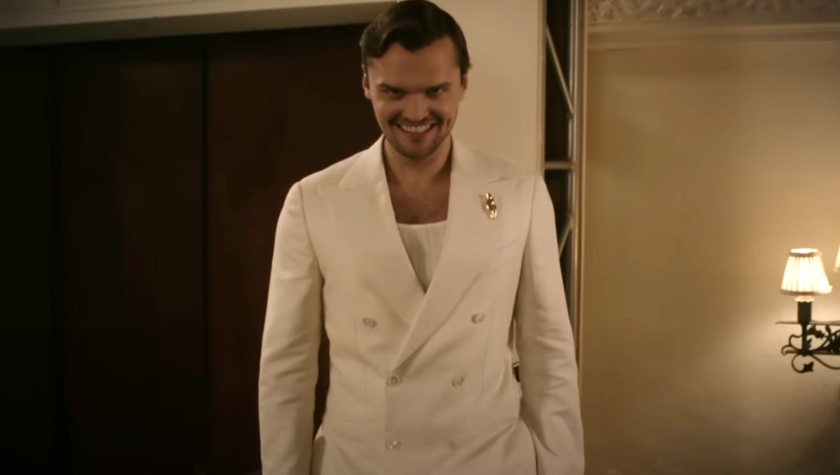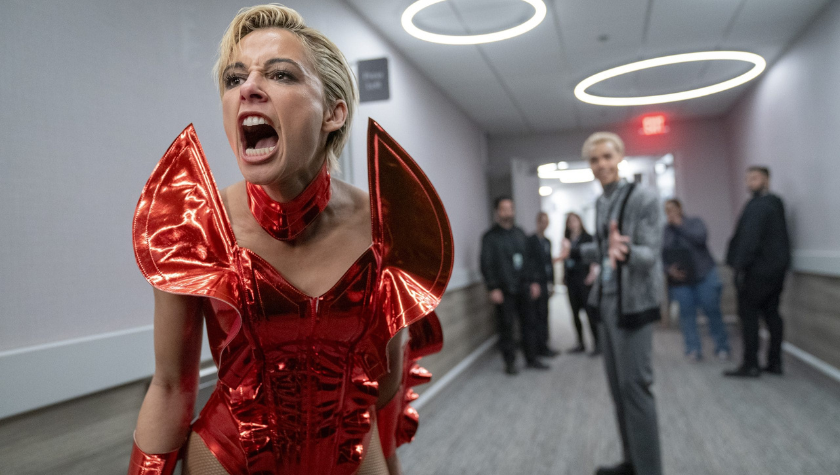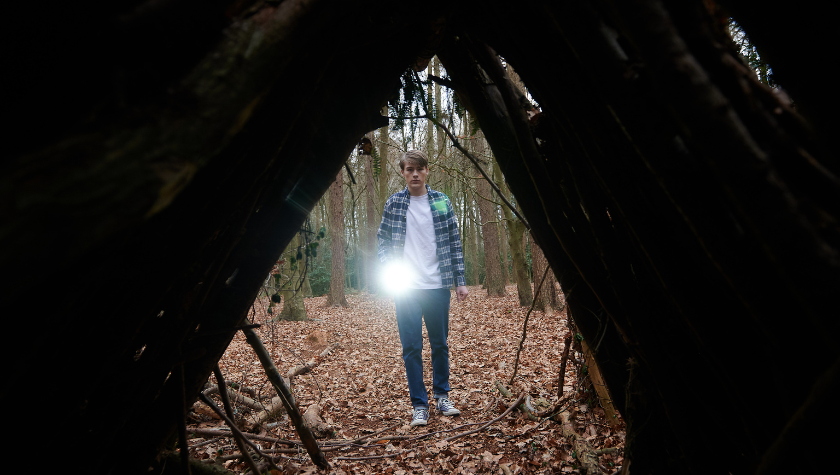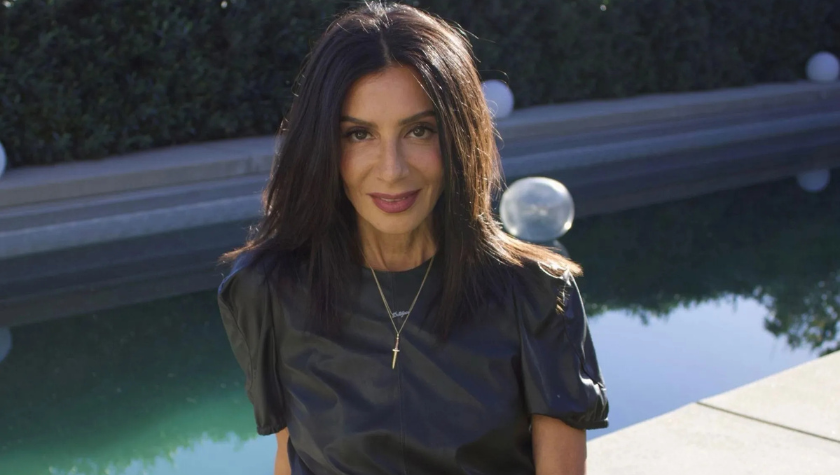Five Lessons in Horror Writing from 'Smile 2' Filmmaker Parker Finn
October 30, 2024
Writer/director Parker Finn has mastered a specific brand of horror with 2022’s Smile and this year’s Halloween hit, Smile 2. It’s dour, it’s high-concept, it’s ghastly and gory and great. The story might lead viewers to ask certain questions. How does he come up with such unique scares, and write them visually on the page? How does a focus on character influence the tension? Also, is he okay? (Just kidding.)
Finn has tapped into something that is resonating with horror fans and everyday moviegoers alike, and is doing so with original storytelling and deft direction that has landed him in the nation’s number-one box office spot.
In this film, his smiley contagion lands on Skye Riley (Naomi Scott), one of the world’s biggest pop stars on the cusp of a comeback. The year before, she suffered a deadly accident and heavy substance abuse.
As she preps for her tour, she visits old friend Lewis (Lukas Gage), who has just had the curse transferred to him. After he dies in front of her, Skye finds herself rehearsing and handling appearances as everything crumbles around her. She grows increasingly manic, not sure what’s real and who she can trust.
Skye Riley’s character introduction
Hopping on Zoom with Finn, that’s where I started, wondering about Skye’s emotional journey and why he chose to start her at a psychological low point. Part of what he’s exploring in the film is the pressure of fame and how it can drive performers to extremes, and how audiences can be a part of this pressure, so it made sense to meet her at the start of a comeback.
“I knew that in introducing Skye emotionally, I wanted her to be a little bit of an enigma to us when we first meet her,” Finn said.
She’s first seen on a TV screen, appearing on a daytime talk show to discuss the mistakes she’s made, promising her fans to do better.
“I had written this into the script that we start outside of the TV, and we are on the outside looking in,” he said, “and at a certain point, we very, very subtly end up pushing through the screen, and suddenly we’re in the studio with her and Drew Barrymore. It was about this idea of coming from the outside to the inside of her world.”
It was a deliberate choice to keep the character distant.
“Once we get inside how we’re framing her, we know there’s something else up that she seems very guarded that she’s masking. It’s not until we start going into her personal life that we realize, ‘Oh, this is somebody who is quite fragile, quite vulnerable, emotionally fraught, and potentially damaged.’ Again, it was all thematically about who she’s public-facing versus the real human being that we’re going to meet behind the curtain.”

Outlining the story
Most writers will say that outlining is an important part of their process, and Finn confirmed it was part of his. He starts with an “information dump” for his initial ideas.
“Every project, I have a handwritten notebook. It’s just for that project that I’m writing notes in. I have an email chain that I start with myself for quick little things when I’m out somewhere, and I don’t have my notebook. And then I also usually have a Word document that’s a stream-of-consciousness journal, and that’s where I’m really doing a lot of heavy lifting and chewing things over and asking myself questions and discovering answers.
“When I die, I hope somebody burns all that stuff because if somebody found it, they’d think I’m a total maniac. But once I really feel like, ‘Okay, I have got something here thematically, I really am starting to understand this character,’ that’s when I start outlining.”
He said this wasn’t always the case, and of course, some writers can work without outlines. For him, it’s integral. Smile 2’s outline was roughly 16 pages and covered each story beat.
“Even some of these scenes, I’m writing bits of dialogue into the outline, little back and forths between characters,” he said. “One of the big things for me is I always have to know my ending before I start writing because I need to know where I’m going both plot-wise and emotionally. Once I get toward the end of that outline, it’s usually once I start to feel myself itching to start writing the script. That’s when I know I’m ready.”
It’s a unique challenge to write a sequel to your work. How do you keep it fresh, especially since many of the beats will be the same? This is a story about an entity that curses and kills people without fail.
The early scene with Lewis and Skye was a challenge for this reason.
“The audience now is so ahead of the character that we know what’s coming down the pike,” he said. “We just don’t know when or quite how. Because I didn’t have the benefit of the dreadful mystery of what’s going on, I needed to figure out another way to engage the audience in that scene.”
Lewis is deranged in this moment, seemingly high, and Skye doesn’t realize the danger she’s in. There is tension in that knowledge, but it’s softened by Lewis’ mania.
“I really love this idea that this scene that’s this echo of one of the most dreadful scenes in the first one is going to make people laugh in this one, that it had this really sly sense of humor to it and was sort of absurdist,” Finn said.

Naomi Scott in 'Smile 2'
Tension on the page
Injecting some dark humor is a way to keep things fresh. But you also need to keep the reader (and audience) engaged with tension. Finn’s visuals are extremely specific and uniquely scary. I mentioned to him that while doing some digging, I noticed some Redditors were keenly interested in the first script and what certain moments looked like on the page.
“When I think about how I’m going to create tension or dread or a set piece or whatever on the page, I’m really thinking about how can I put this on the page in a way that truly will give you the feeling of what the scene is going to be like in the film,” he said. “That’s everything from word choice to white space.
“A lot of my lines tend to be two lines, and I try to be a little punchy, but sometimes when something is building toward something that’s quite dreadful, and maybe we’re staying in a shot until something horrible happens, I’ll let the line run on for five, six lines where the very last word of it is what then is going to be the thing that’s going to get you startle.”
Finn suggested that a little creativity (and maybe some rule-breaking) can help those big moments land.
“I know there’s a lot of debate amongst especially aspiring writers about things like unfilmable [writing] and using certain language and stuff in scripts,” he said. “For me, I’m a big believer, first of all, do whatever you have to do to tell your story. But I think that so much of the story is tone and atmosphere.
“It’s like how if you have somebody staring off into the distance, you can write, ‘They stare off into the distance,’ but that’s not necessarily giving you the feeling of what it’s going to feel like in that moment. So I do feel like I love to use stuff that enhances that moment language-wise, that really gives us a sense of how I hope it will feel in the film.”
Some of those big moments, in this film’s case, are happening in Skye’s head as a result of paranoia from the smile curse. It would be easy for a writer to focus on big jumpscares that don’t emotionally resonate.
How does Finn give those moments weight? He keeps the focus on what those events mean to the character, real or not.
“Very early on in writing, I think one of the big humps I had to get over was I often used to try to create a plot and then create a character to stick inside of that plot,” he said. “That is something that does not work for me. It’s not the way that I want to tell my stories, which is something that I had to write a bunch of scripts to figure out.
“What I eventually had to discover was, for me, character is story. It’s inseparable from it, and that everything is being driven by her internal psychology and that all the external forces are directly precision-tuned to be at odds with what’s going on inside of her.”
This is why it can be extremely important to have a thematic argument or question at the center of your screenplay. The protagonist will likely be at odds with that theme for much of the film. Keeping this in mind for each scene will ensure your beats resonate with the character.
“I’m trying to tie the audience very intensely, subjectively to Skye, so that you really feel like you’re in her shoes,” Finn said. “Emotionally and through the motifs that we’re exploring, all of this stuff matters and has impact and weighs on us. And whether I’m trying for some catharsis or something that’s really upsetting and horrifying, it’s the experience that she’s having.”
Writing a oner
I wondered about a more technical aspect of the film, too—Smile 2 starts on a oner, beginning with events immediately after Smile. There are lots of ways to pull this off as a writer, but I asked Finn what it looked like for him.
He said it was important to call it out for the reader, so they will know how to visualize (or prepare) for it.
“The writing of it is designed to stay in real time, which I think is really important is that because oftentimes a line break almost for me means, ‘All right, new shot,’ right?” he said. “Well … the opening was like seven and a half minutes long. I’m not going to write seven pages, single space.
“But the idea that you just keep being pulled forward, that’s what I’m trying to do. ‘Oh my God,’ there’s almost this exhausting run-on feel to the whole thing. You have these moments where there’s a reveal, or something happens where you can ‘dot, dot dot,’ or you really want to put a stamp on something, and then you continue on.”
Advice to aspiring writers
Finn suggested that writers do their best to finish scripts, but don’t get stuck on rewrites. The process can take years of your creative journey if you allow it, he said.
“I think it’s really important to finish your scripts and not bail on them,” he said. “I think if you get in a bad habit of getting into the second act and things get hard and it’s like, ‘I want to work on some new idea.’ I think getting to the end—fade out—even if you don’t go back and rewrite it, is really important.”
The process of completing even a weak draft can be educational, and then: “Always be starting something new.”
He also acknowledged that there is a lot of inherent competition and comparison in screenwriting. Trying to copy another writer’s approach or style isn’t the way in—he said you should “be your first audience member.”
“What are the movies that I want to see? Because I think if you are following your own passion, you’re going to do your best work. Now that’s not to be totally to blow off what’s going on in the industry and not to pay attention to how the business side works, but creatively don’t try to scheme your way in. Just do your own best work. And if it’s good, people will find it.”
Written by: Jo Light
A recovering Hollywood script reader, Jo spent several years in story development, analyzing screenplays for the likes of Relativity Media and ICM Partners while chasing her own creative dreams. These days, she juggles writing for industry leaders Final Draft, ScreenCraft, and No Film School, teaching budding writers at the college level, and crafting her own screenplays—all while trying not to critique every movie she watches.



![[L-R] Isabelle Fuhrman as “Charlotte” and Mena Massoud as “Adam” in the romance film WISH YOU WERE HERE, a Lionsgate release. Photo courtesy of Lionsgate.](https://200838.fs1.hubspotusercontent-na1.net/hubfs/200838/%5BL-R%5D%20Isabelle%20Fuhrman%20as%20%E2%80%9CCharlotte%E2%80%9D%20and%20Mena%20Massoud%20as%20%E2%80%9CAdam%E2%80%9D%20in%20the%20romance%20film%20WISH%20YOU%20WERE%20HERE%2c%20a%20Lionsgate%20release.%20Photo%20courtesy%20of%20Lionsgate..png)